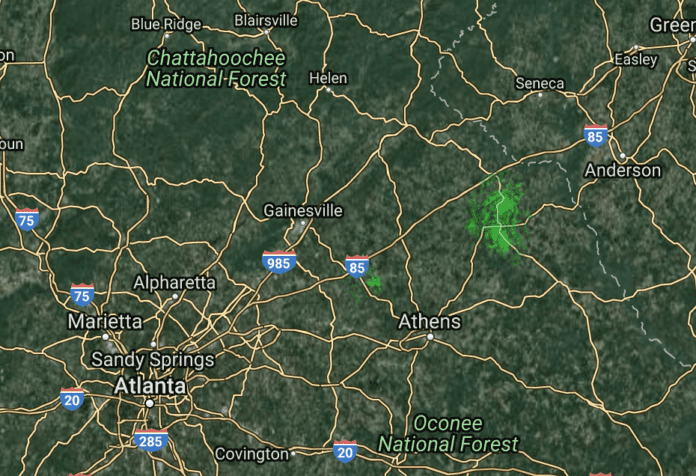Part 96 of FCC rules could support LTE deployments in shared CBRS spectrum
The U.S. Federal Communications Commission has yet to finalize Part 96 rules governing shared access to spectrum in the Citizens Broadband Radio Service (CBRS) frequencies, 3550 MHz to 3700 MHz. But this holding pattern hasn’t deterred a range of service providers and infrastructure vendors from developing Part 96-ready commercial deployments and RF equipment, respectively. While a range of deployment scenarios are being considered, ExteNet Systems sees fixed wireless access, particularly in support of rural broadband services, as a key use case.
In the latest, ExteNet is working with Paladin Wireless, a WISP that serves customers in Northeast Georgia near the borders with South Carolina and North Carolina. The planned LTE fixed wireless access system will leverage small cells and a distributed evolved packet core to provide rural coverage.
ExteNet leaders, as well as local Georgia state Congressman Doug Collins, discussed the planned deployment in terms of extending high-quality broadband services to underserved communities.
“ur goal is to help bridge the digital divide in rural and remote communities,” Jason Osborne, Vice President of Business Development and Strategic Initiatives, ExteNet Systems, said in a statement. “In partnering with Paladin Wireless, we worked to deliver a fixed wireless solution that is a preferred alternative to legacy solutions, like satellite and DSL, to support high-bandwidth applications. This same infrastructure can support multiple use cases including mobile roaming services from the Tier 1 providers when conditions demand.”
Collins added: “Broadband access is often a community’s key to realizing its dreams and ambitions in the digital age. We need innovative solutions to deliver last-mile service to much of northeastern Georgia, and it’s encouraging to see companies investing in these families and businesses by providing high-speed access to the internet, which means access to opportunity.”
The pending FCC rules consider tiered access to the CBRS band, which is currently used by the Department of Defense for use in certain radar installations, as well as by non-federal fixed satellite service earth stations for receive-only, space-to-earth operations and feeder links. The current plans calls for three tiers of spectrum usage comprised of federal and non-federal incumbents, priority access licensees and general authorized access users. Access would be under a flexible spectrum access system (SAS) model designed to reduce interference between users.
The project in Georgia builds on recent work ExteNet has undertaken in the rugged Sierra Nevada foothills, which range to the northeast and southeast of Sacramento, Calif., with WISP Cal.net. This LTE system is also designed to be Part 96-ready.
In July ExteNet asked the FCC for special temporary authority for the “ongoing integration testing of CBRS base station and user equipment testing to verify correct operation of networks based on equipment from multiple vendors,” according to the application, which is attributed to Randy Johnson, director of technology evolution, specifies equipment from vendors Nokia and Ruckus Wireless.
In a Q&A with Johnson, he told RCR Wireless News, “ExteNet has conducted extensive testing within commercial office space environments. Typical construction materials in this environment include steel stud and drywall partition walls, cement block walls, reinforced concrete floors and modular office furniture. We have been particularly interested in calibrating our RF simulation models with real-world measurements. We use standard commercial walk-testing tools to gather RF measurements. We also record signal strength and device behavior with several varieties of CBRS-compatible User Equipment.
“ExteNet has also conducted extensive outdoor testing where the focus has been mostly on measurements of Part 90 (3.65GHz) networks that will evolve to CBRS (Part 96). Of course, we adjust the measurements to reflect the differences between Part 90 and Part 96 regulations. These are typically NLOS scenarios with a variety of vegetation and terrain issues.”

